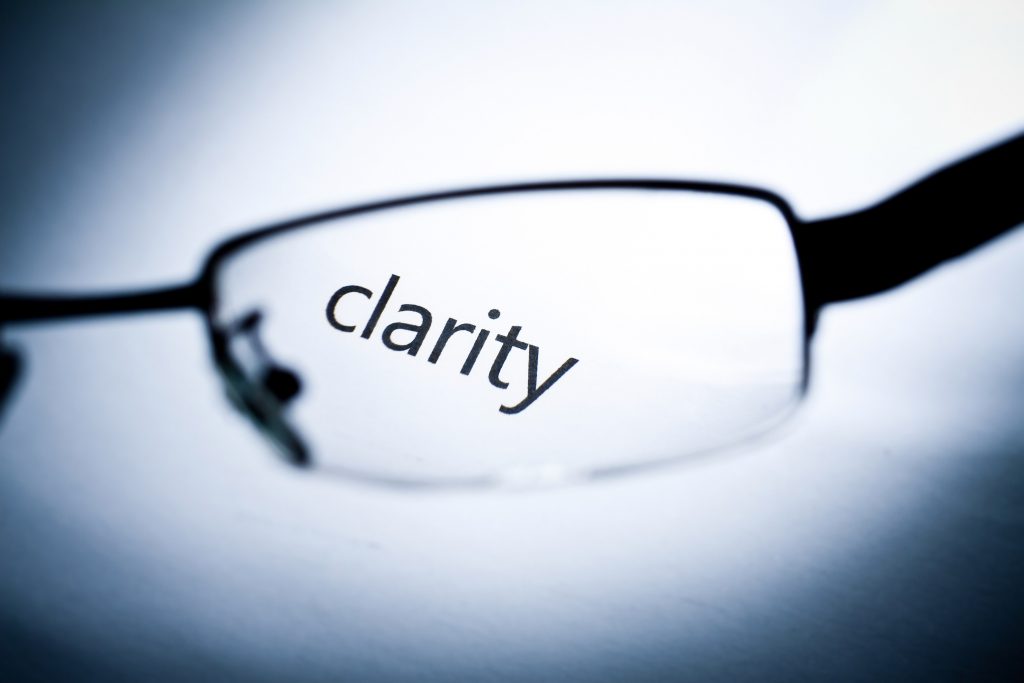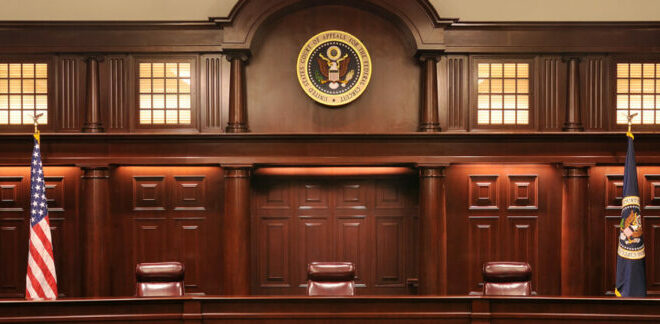“The Thaler ruling does not preclude the issuance of patents where AI was used in connection with the research. It only holds that an AI cannot be a named inventor.”
 The August 2019 announcement that two patent applications had been filed naming an artificial intelligence (AI) algorithm as an inventor in the United States and a dozen other countries was regarded as disruptive and profound at the time. It was one of the hot topics in patent law during those last few months before the pandemic. But since then, given all the other crazy and disorienting stuff that has happened in the world, we have become desensitized to the question, even if it is just as radical and important today.
The August 2019 announcement that two patent applications had been filed naming an artificial intelligence (AI) algorithm as an inventor in the United States and a dozen other countries was regarded as disruptive and profound at the time. It was one of the hot topics in patent law during those last few months before the pandemic. But since then, given all the other crazy and disorienting stuff that has happened in the world, we have become desensitized to the question, even if it is just as radical and important today.
To be sure, the U.S. Court of Appeals for the Federal Circuit’s August 5 ruling that an “inventor” must, under the Patent Act, always be a human being, would seem to definitively resolve the question. As a matter of existing and clearly settled law, Stephen Thaler’s AI machine, DABUS, cannot be a named inventor on his applications for a fractal-shaped beverage container and a neural flame, like we always thought in the Before Times. It’s time to relegate this parlor-game discussion to the same recycle bin as Beeple’s non-fungible token (NFT), The Tiger King, and so many other viral distractions.
Or, perhaps, not so fast.
The discussion has exposed some edge cases and misconceptions that warrant further discussion. And it has sharpened the contrast between several of the main policy rationales behind patent law. Let’s take a quick look at a few of these.
AI is Not Ready for Legal Personhood
In asserting that DABUS should be a named inventor, many of us set off down a path of reasoning and inferences that went something like this: If an AI is an inventor, that would mean that the AI needs to have all the rights, capabilities, responsibilities and liabilities that are associated with inventors. The list is long, but it includes: the ability to own and transfer property interests, the ability to sign a sworn oath of inventor, the ability to prepare and file a patent application or to engage and authorize someone else to do it, and the ability to testify about the invention in a deposition or trial.
But Dr. Thaler and the Artificial Inventor Project make no such claim for DABUS. As the Artificial Inventor Project website states, “AI does not have legal personality and cannot own property.”
Confusion on this point is easy to come by. Even as they deny that DABUS has legal personality, they argue that it is “sentient,” supplying their own, very specific definition of that term. This led many, including the Australian judge who initially ruled in favor of the DABUS patent applications, to make a string of assumptions:
“Who sets the goal for the system? The human programmer or operator? Or does the system set and define its own goal? Let the latter be assumed. Further, even if the human programmer or operator sets the goal, does the system have free choice in choosing between various options and pathways in order to achieve the goal? Let that freedom also be assumed. Further, who provides or selects the input data? Let it be assumed that the system can trawl for and select its own data. Further, the larger the choice for the system in terms of the algorithms and iterations developed for the artificial neural networks and their interaction, the more autonomous the system. Let it be assumed that one is dealing with a choice of the type that DABUS has in the sense that I have previously described.” (para 127, emphasis added)
This ruling was overturned on appeal by the Federal Court of Australia in April 2022.
The Federal Circuit’s ruling cuts off any debate, for purposes of U.S. patent law, of questions like the following: (i) Can an AI be sentient without having full legal personhood? (ii) What are the criteria for legal personhood, and if an AI satisfies all those criteria, is it entitled to legal personhood? (iii) If an AI is qualified for full legal personhood, can it be a named inventor on a patent?
Will those questions, particularly the first two, arise again as technology takes us ever closer to full-blown Artificial General Intelligence (AGI)? Possibly. Maybe even probably. But not now, and not in the silo of U.S. patent law.
Does Patent Law Need a Named (Human) “Inventor”?
Of course, it is now settled that U.S. patent law requires a patent application to name one or more human inventors. But does it have to be that way? One might argue, for example, that a strong national industrial policy ought to favor the protection and monetization of innovation, regardless of whether it came from human creativity or AI algorithms.
We have seen that South Africa’s patent office granted Dr. Thaler’s patent applications – though without substantive examination and without a clear statutory definition of “inventor.” And it is possible to imagine a patent system where only the owner and the applicant need to be named. Indeed, even the UK Court of Appeal ruling in September 2021 seemed to leave the door open a crack. Under UK law, as under U.S. law, an “inventor” must be a natural person. And a patent application must identify the inventor – if the applicant knows the identity of the inventor. Dr. Thaler’s UK patent application failed because he insisted that DABUS was the sole inventor, even as he (Dr. Thaler) was the applicant and owner.
But what if Thaler were to file a patent application saying, in effect, “in view of how the UK has now defined ‘inventor’ as limited to natural persons, I don’t know who the inventor is”? It’s quite possible the Court of Appeal could have found such an application sufficient (or at least no longer deficient as to how it named an inventor). There remains, however, at least one other problem with Thaler’s application: the question of ownership. The argument goes that because Thaler owns DABUS, he therefore owns anything that DABUS produces. This doctrine is called “accession,” and is based on the idea that someone who owns an apple tree also owns the apples that grow from the tree. The UK Court of Appeal reached all the way back to Eighteenth Century legal scholar William Blackstone to discuss the concept of accession, before concluding that it applies only to tangible objects (e.g., apples) and not to intangibles (e.g., inventions).
Does this suggest that the United States could, theoretically, amend the Patent Act to do away with the requirement that there be an “inventor,” or at least broaden the definition of “inventor”? Perhaps not. Although the Federal Circuit discussed briefly the policy aim of the patent and copyright clause in Article I, Section 8, clause 8 of the Constitution (“to promote the Progress of Science and useful Arts”), the ruling made no mention of the fact that that clause specifically references “authors and inventors” as the ones to be protected: “To promote the Progress of Science and useful Arts, by securing for limited Times to Authors and Inventors the exclusive Right to their respective Writings and Discoveries” (emphasis added). It is possible, to be sure, that “inventors” in the Constitution might be deemed to mean something different than “inventor” in the Patent Act. But would the Supreme Court’s originalists really be expected to conclude that the Eighteenth-Century Founding Fathers intended that “authors and inventors” would include artificially-intelligent computer programs?
Where is the Boundary of Inventorship for Human Researchers Who Use AI Research Tools?
Finally, let us consider a very practical question. It illustrates just how narrow the Thaler-DABUS cases are. The Thaler ruling does not preclude the issuance of patents where AI was used in connection with the research. It only holds that an AI cannot be a named inventor. Since Thaler adamantly insisted that he made no inventive contribution to the inventions claimed in the applications, that left these two particular applications with no inventor – human or AI. Under existing and well-established law, when human researchers make inventive contributions to the inventions claimed in a patent application, they can be named as inventors. If a researcher is the sole human making an inventive contribution, then that researcher can be named as the sole inventor. There can be no challenge to the patent on the basis of improper inventorship because an AI used during research was not also named as an inventor. To that extent, the Federal Circuit’s ruling may actually come as a relief to research scientists and their institutions; the ruling provides clarity and certainty about how inventors should be identified for patent applications arising from AI-assisted research.

![[IPWatchdog Logo]](https://ipwatchdog.com/wp-content/themes/IPWatchdog%20-%202023/assets/images/temp/logo-small@2x.png)

![[Advertisement]](https://ipwatchdog.com/wp-content/uploads/2024/05/Artificial-Intelligence-2024-Getting-AI-Patents-Allowed-sidebar-700x500-1.jpeg)
![[Advertisement]](https://ipwatchdog.com/wp-content/uploads/2024/05/Patent-Portfolio-Management-2024-sidebar-early-bird-larger-700x500-1.jpg)

![[Advertisement]](https://ipwatchdog.com/wp-content/uploads/2021/12/WEBINAR-336-x-280-px.png)
![[Advertisement]](https://ipwatchdog.com/wp-content/uploads/2021/12/2021-Patent-Practice-on-Demand-recorded-Feb-2021-336-x-280.jpg)
![[Advertisement]](https://ipwatchdog.com/wp-content/uploads/2021/12/Ad-4-The-Invent-Patent-System™.png)






Join the Discussion
3 comments so far.
Anon
August 11, 2022 11:20 amJohn K,
I can easily accept your distinction (in a sense, there is NO AI inventions yet, and the machine learning aspects are merely USE OF computing tools).
Notwithstanding that view – it IS important to recognize that such a view is NOT universally accepted, and it would be prudent to NOW start exploring the impacts as to inventions that cannot be FULLY traced to having a human (or a team of humans) that satisfy the LEGAL definition of inventor.
NOT ONLY for the aspect of inventorship (single AND/OR joint), but also for such other impacts such as on another non-human legal fictional person: the Person Having Ordinary Skill In The Art.
John K
August 11, 2022 02:36 amEveryone is misguided with regard to this tech. First, STOP calling it Artificial Intelligence, we are not even close to that. This is all machine learning.
Second, the inventor should always be the human directing/choreographing the machine learning data feed and the logic engine of the machine learning engine. Many machine learning engines today are basically toolkits that might be open source, and so the main manipulation is not programming it as much as feeding it the right data, getting feedback loop, and re-feeding it data.
In many ways this is like a photographer setting a photo shoot. It could be inside where every detail is controlled by the photographer. It could be in the middle of Manhattan where it is chaotic with far less control. Still, the photographer controls the setting, the angle, the focus, the light, the frame, the choice of media, and frames the shot. And takes many shots and shares the editorialized world view. For that work, the photographer owns the copyright.
In much the same way, those that feed the data sets, or direct the date feeds and correct and provide feedback corrections, they frame how the machine learning engine processes data and what its output will be. And as such, they are the directors and inventors.
Anon
August 9, 2022 01:33 pmLots of strawmen – and legal errors – in this article.